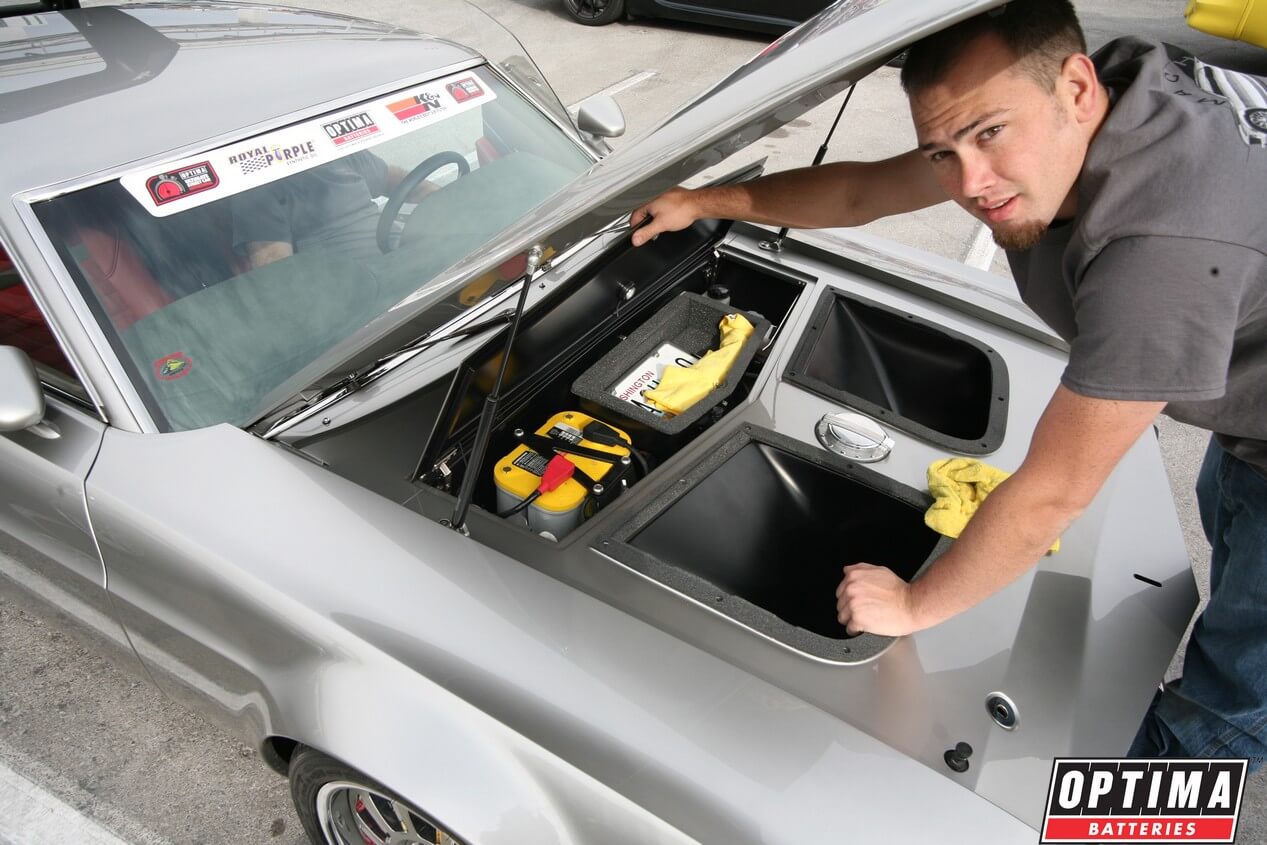How Do I Use Jumper Cables to Jumpstart My Car Battery?

- Sponsor
- OPTIMA Batteries
- Location
- Milwaukee, WI


Why don't batteries seem to stop working in the summertime, when it's warm outside? That's a subject for a different blog and if you're reading this from your mobile device, you're probably cold, you might be outside and you don't really care why this never seems to happen in the summer. All you know is your car won't start and you need help getting it going. If that is the case, we'll get right to explaining how to properly jump-start your vehicle.
First, make sure the problem you have is really with your battery. Sometimes cars with deeply-discharged batteries will make a clicking sound when you attempt to start them. You can also check your headlights (you may need to turn on your ignition on) to see if the lights are dim (a good sign of a discharged battery).
Once you've determined you really do have a discharged battery, you need to find a vehicle with a fully-charged and functioning battery and use a set of jumper cables to connect that battery to the vehicle with the deeply-discharged battery. This should be done by someone wearing protective glasses and gloves, if possible, to minimize the potential for injury. It's also a good idea not to have loose clothing (like a dangling neck tie) or clothing with exposed metal (leave your chain maille vest in the trunk for now).
Understand that your jumper cables have two different cables that are typically identified by red (positive or +) clamps connected to red wires and black (negative or -) clamps connected to black wires. Make sure they're not tangled up, can easily extend to the general area of the battery in both vehicles and that the red and black clamps never come in contact with each other (the vehicles should never touch either). Once that is squared away, follow these instructions for the majority of vehicles-
1. Connect the red (+) positive clamp to the positive (+) post on the battery in the good vehicle.
2. Connect the other red (+) positive clamp to the positive (+) post on the battery in the vehicle being jump-started.
3. Connect the black (-) negative clamp to the negative (-) post on the battery in the good vehicle
4. Connect the other black (-) negative clamp to a ground point somewhere away from the battery. This ground point might be on the chassis, where the thick black cable running from the battery connects to the frame or some other shiny (not painted) metal bolt that is attached to the engine, but not to close to any moving parts that could get tangled in the jumper cables, like a fan blade or belt. Be sure to do this last, as there may be a small spark and you'd ideally like that to happen as far away from the battery as possible.
5. Once the two systems are connected let them stay that way for a minute or so, before attempting to start the vehicle with the discharged battery. You may want to even rev the engine (but not race rev, just above idle) slightly during that time. Once the stalled vehicle has been started, disconnect the cables in the opposite order.
This may be the most important part, so don't skip reading this next paragraph!
Any battery that has been so deeply-discharged, that it needs a jump-start to get a vehicle going, should be fully-recharged with a quality battery charger as soon as possible. Your vehicle's charging system is designed to maintain the charge in a battery, not recover deeply-discharged batteries. Asking that task of a vehicle's charging system can lead to a cycle of dead batteries and jump-starts until either the battery fails (expensive) or the alternator/charging system fails (really expensive). Treat jumper cables like that emergency one-gallon can of gasoline- it's great to get you off the side of the road or out of a tight spot, but don't expect your car to run forever afterwards. If you don't own a quality battery charger, you can buy one directly from us and we'll ship it right to your front door.
If you're not sure if you can trust your battery anymore, you can buy a replacement battery from us and we'll ship that to your front door too.
Some newer vehicles no longer have their batteries located under the hood. However, many will have easily-identifiable points for attaching jumper cables, if needed. The same steps hold true if that is the case, just treat those points like you would the battery and ground itself, because that is where they are connected. If you've read through all of this and it still sounds confusing or intimidating, don't be afraid to call on a professional for assistance.
